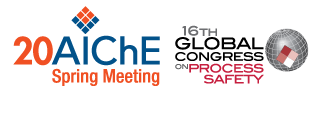

Chemical manufacturing processes rely on intended chemical reactions to create desired products. During this process, energy from both intended and unintended sources can be generated, and needs to be safely accommodated through process design and safety systems. This paper will identify test methods for characterizing the energy produced by chemical reactions and review process design strategies including inherently safer design options. Several types of chemistries will be reviewed using methods contained in the Center for Chemical Process Safety (CCPS) book Guidelines for Chemical Reactivity Evaluation and Application to Process Design.
A case study will be reviewed to illustrate the concept and application of these critical process design elements for reactive chemical systems, focusing on the proper use of kinetic parameters, thermal stability data, and heat transfer requirements to develop an appropriate Basis of Safety for the reactive system design.
The following learning objectives will be achieved:
- Introduce a practical approach for Reactive Energy Hazard Evaluation.
- Overview a disciplined approach for reviewing test data to identify potential energetic scenarios.
- Understand critical elements of process design for reactive chemical systems.
Presenter(s)
Once the content has been viewed and you have attested to it, you will be able to download and print a certificate for PDH credits.
If you have already viewed this content,
please click here
to login.
Language
Pricing
Individuals
| AIChE Member Credits | 0.5 |
| AIChE Pro Members | $19.00 |
| Employees of CCPS Member Companies | Free |
| AIChE Graduate Student Members | Free |
| AIChE Undergraduate Student Members | Free |
| AIChE Explorer Members | $29.00 |
| Non-Members | $29.00 |
